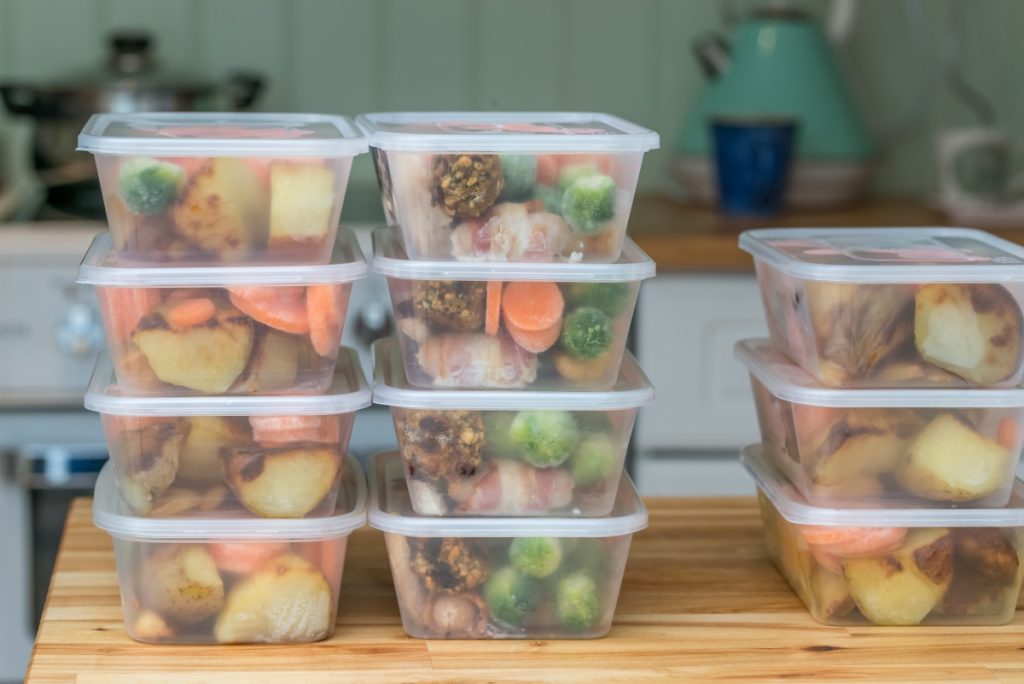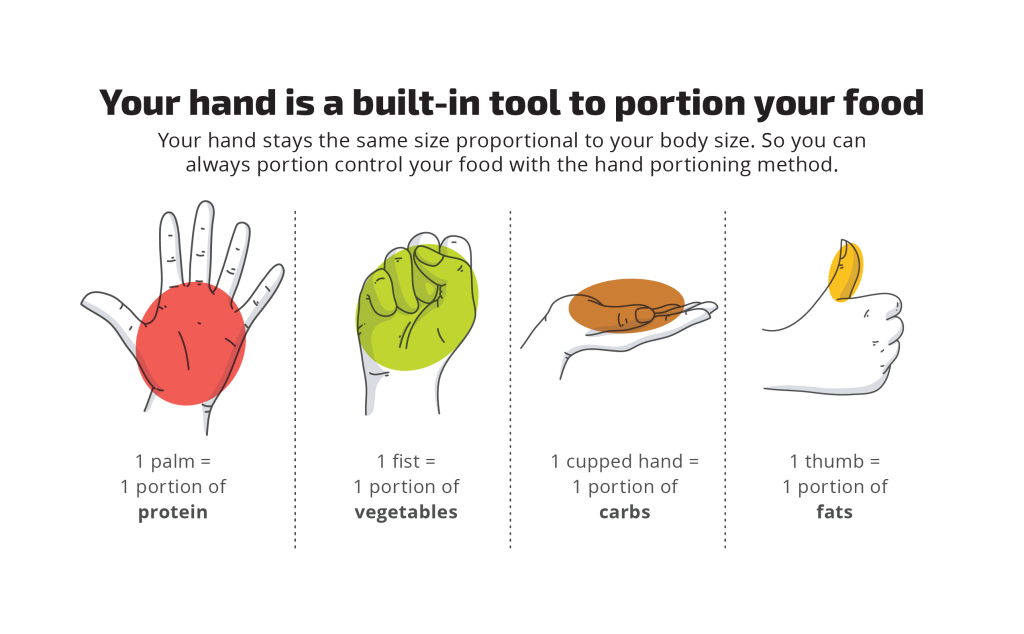6 Different Ways To Hit Your Daily Nutrition Goals

Most people fail to achieve their nutrition goals due to lack of preparation, or not paying attention to their food preferences and nutrient needs.
Fact checked by Nattha Wannissorn, PhD

Dietary changes are different for each individual, depending on your goal, which may include:
- Reducing body fat
- Increasing lean muscle
- Reducing inflammation
- Improving your cognitive function or mood
- Supporting your performance
- Simply eating healthier
- Or a combination of the above

You could also be working on dietary changes for sports, aesthetics, recovery, or simply your preference.
This means that you’ve got to be specific, aware, and intentional with your diet and supplementation if you want to be successful and sustain your results.
In this article, let’s take a look at six of the most practical ways to ensure you hit your nutrition goals each day.
Make sure to read through the whole list so you don’t miss something that might be life-changing for you. All six of these are of equal or even greater importance in creating results that feel good and are sustainable.
1. Food Prep And Planning Ahead
Without a plan and regular food prep ahead of time, you make it much harder to achieve your nutrition goals. Planning ahead makes it easy to enjoy meals and snacks that are simple, quick, tasty, and appropriate for your goals.
One study of a behavioral weight loss program demonstrated this well. The more frequently participants were planning their meals, the more weight they tended to lose throughout the program.
The last thing you want is to be stuck at home, work, or on the road and not have access to the kind of foods you know your body needs. Relying on fast food and restaurants sets us up for failure because they may not have something readily available that fits your guidelines.
Furthermore, being hungry when deciding what to eat can lead to overeating and choosing more calorie dense options–the eyes often become bigger than the stomach. To ensure that you stay on track, spend a few hours each week planning out your meals by:
- Grocery shopping and stocking your fridge with healthy groceries
- Prepping, washing, and chopping your produce so they’re ready to use
- Cooking, and storing the produce, proteins, and starches that will then become elements to your meals that you can assemble in minutes
When you prepare your foods right, you will have a fridge full of ready to use staple foods such as pre-cooked meats and starches, pre-chopped veggies for salads, boiled eggs, chopped fruits etc.

2. Make Sure To Prioritize Micronutrients
Regardless of your body composition goals, your body needs more than just calories and macronutrients in order to thrive. Micronutrients are therefore essential, so you need to consume enough to avoid deficiencies, and ensure your body’s systems and organs can perform at their best.
Micronutrient levels have been declining in many foods according to a landmark study that examined levels of nutrients from 1950-1999. Large scale food production depletes the soil of many micronutrients. This is why it is essential that you cover your foundations with supplemental support, such as with Primergen V and M.
We also suggest a high quality magnesium supplement as part of that foundation because you need it in over 300 biochemical reactions in your body. Also, over 80% of the population simply can’t get enough from food alone.
3. Use Your Hands To Measure Portions
If your goals are to lose weight or gain muscles, then calorie control matters. This means you have to monitor your portion sizes.
Luckily, you’ve got a built-in mechanism for determining perfect portions for you. This means how much and what kinds of food you will combine to create a goal-appropriate template for meals.
It comes down to using your hands as measuring tools and not letting our eyes deceive our stomachs into over or undereating. Across each meal you can use this system as a baseline:
- 1-2 palms of protein
- 1-2 cupped handfuls of carbs (fruit or starches)
- 1-2 fists of vegetables
- And 1-2 thumbs worth of fat.

This approach has been popularized by the team at Precision Nutrition and is well tested having been used successfully with thousands of individuals.
Alongside these portions, you can also use a calorie calculator and get a measurable amount to aim for daily. If you are active and want to build muscle, you’ll need more calories. This means adding more proteins and/or fat in most cases. Conversely, if weight loss is your goal, you’ll want to maintain protein while reducing calories to create a slight deficit.
4. Utilize High Quality Shakes For Easy, Quick, And Satisfying Meals
Protein intake is very important if you’re:
- Training multiple days per week
- Building muscle mass
- Improving your mood and cognitive function
- Losing body fat on a caloric deficit and wanting to keep your muscle mass
- Working to stabilize your blood sugar and minimize craving
Many people struggle to eat enough protein, so a high-quality protein powder really helps with supporting muscle mass and recovery. The recommended daily intake (minimum to stay healthy) for daily protein is 0.8g/kg of bodyweight, but recent evidence suggests 1.2 – 1.6g/kg is an optimal amount. This means that if you weigh 160 lbs (72.5 kg) you’d be eating between 87 – 116 grams of protein per day, or more if you’re training a lot.
Protein powders are especially convenient if you are plant-based and don’t want to rely on large portions of beans and rice to create a complete protein. Since many plant based foods are higher in carbs or fats, if you’re limiting calories, prioritizing protein-dense foods makes that much easier.
Furthermore, there are no more excuses because you can simply pop a few things into the blender, mix, and go. Try combining your powders with water, coconut water, perhaps a scoop of greens and drink on the go. High quality liquid meal replacements will be within your reach at all times.

5. Eat Fresh, Organic, And Wild As Much As Possible
We talked earlier about farms depleting the nutrients in soil and thus in the food grown on it. So, you want to prioritize foods that are as wild, organic, and fresh as possible. This can make all the difference for maximizing nutrition without an increase in calories or even cost.
Many wild edible plants are abundant in most areas and, of course, are completely free to harvest. Similarly: with home grown or locally grown produce, in many cases, the sooner you eat it from when it was picked the more alive and nutrient-rich that food is going to be. It’s true what the best cooks say that when it comes to quality and delicious food, fresh is best.
And if getting started in wild foraging is of interest to you, the best place to start is to search for a local foraging class online and then go out with an experienced person who can help you identify what is good and safe to eat.
6. Focus On Blood Sugar Balance And Prioritize Protein
Blood sugar imbalances can make you grouchy and hungry, and craving unhealthy foods. This can make it extremely difficult to stay on track with your nutrition plans.
Oftentimes what gets in the way of consistent and balanced eating are the effects of unstable blood sugar levels, or “riding the blood sugar roller coaster.” This is commonly caused by overconsumption of fast-burning carbohydrates without adequate protein.
Blood sugar can also be mis-managed simply by not eating in consistent time intervals. Many folks do well with 3 meals and a couple snacks per day because it reminds you to eat every few hours.
If you’re an athlete, consider eating more carbohydrates since they help delay fatigue while competing and they restore glycogen during recovery. And if you’re trying to stabilize your blood sugar in general then consider a Blood Sugar Supplement.
These supplements help put excess sugar into muscle cells. This minimizes glucose spike and crash so that you can safely eat more carbs than usual or a different combination of foods than you are used to.
Rather than skipping meals completely, which can result in overeating later, try sticking with a regular meal schedule each day. This allows steady consumption of nutrients which helps keep blood sugar stable and prevents the energy peaks and crashes that are all too common.
Those who are following a keto or intermittent fasting approach and find it to be beneficial for their body, lifestyle, and goals would be the exception to this rule. It’s important to understand that individual genetics, stress levels, health history, and other factors will dictate which approach makes the most sense for you.
Making It Work For You
Keep this list in mind as you move towards whatever unique nutrition goals you have for yourself and track your progress.
It’s important to remember that your body is aware and intelligent and will tell you when you’ve given it something it responds well to vs. not. This is why, outside of any guidelines, it’s essential that you practice listening to your body’s signs and signals. By tracking how you feel, perform, digest, recover, sleep etc., you can refine the list of foods and meals that work best for you.
After all, your body and goals are unique to you, and your nutrition choices ought to align with that in order to feel and perform at your best.
- Hayes JF, Balantekin KN, Fitzsimmons-Craft EE, et al. Greater average meal planning frequency predicts greater weight loss outcomes in a worksite-based behavioral weight loss program. Ann Behav Med. 2021;55(1):14-23. doi:10.1093/abm/kaaa021
- Davis DR, Epp MD, Riordan HD. Changes in USDA food composition data for 43 garden crops, 1950 to 1999. J Am Coll Nutr. 2004;23(6):669-682. doi:10.1080/07315724.2004.10719409
- St. Pierre B. The best calorie control guide. [Infographic]. Precision Nutrition. Published December 7, 2016. Accessed June 3, 2022. https://www.precisionnutrition.com/calorie-control-guide-infographic
- Memelink RG, Pasman WJ, Bongers A, et al. Effect of an enriched protein drink on muscle mass and glycemic control during combined lifestyle intervention in older adults with obesity and type 2 diabetes: A double-blind RCT. Nutrients. 2020;13(1):64. doi:10.3390/nu13010064
- Phillips SM, Chevalier S, Leidy HJ. Protein “requirements” beyond the RDA: implications for optimizing health. Appl Physiol Nutr Metab. 2016;41(5):565-572. doi:10.1139/apnm-2015-0550
- Cermak NM, van Loon LJC. The use of carbohydrates during exercise as an ergogenic aid. Sports Med. 2013;43(11):1139-1155. doi:10.1007/s40279-013-0079-0




